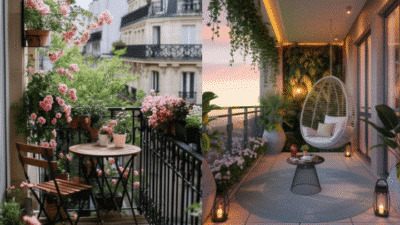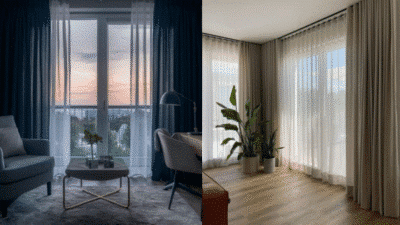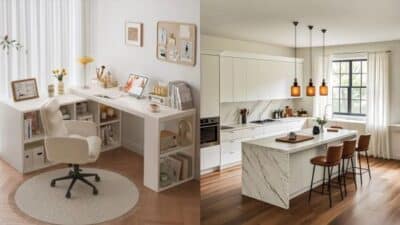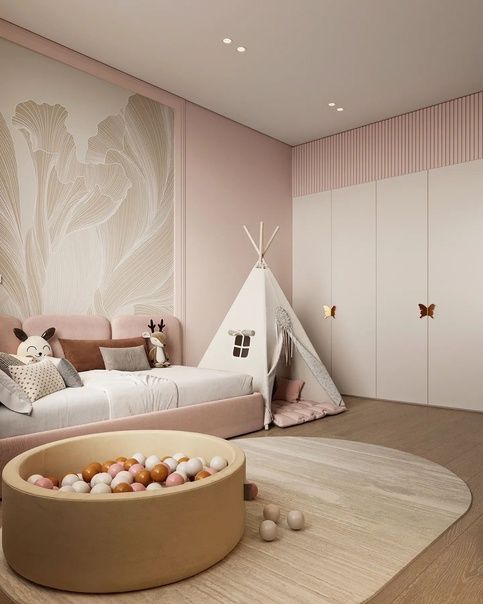
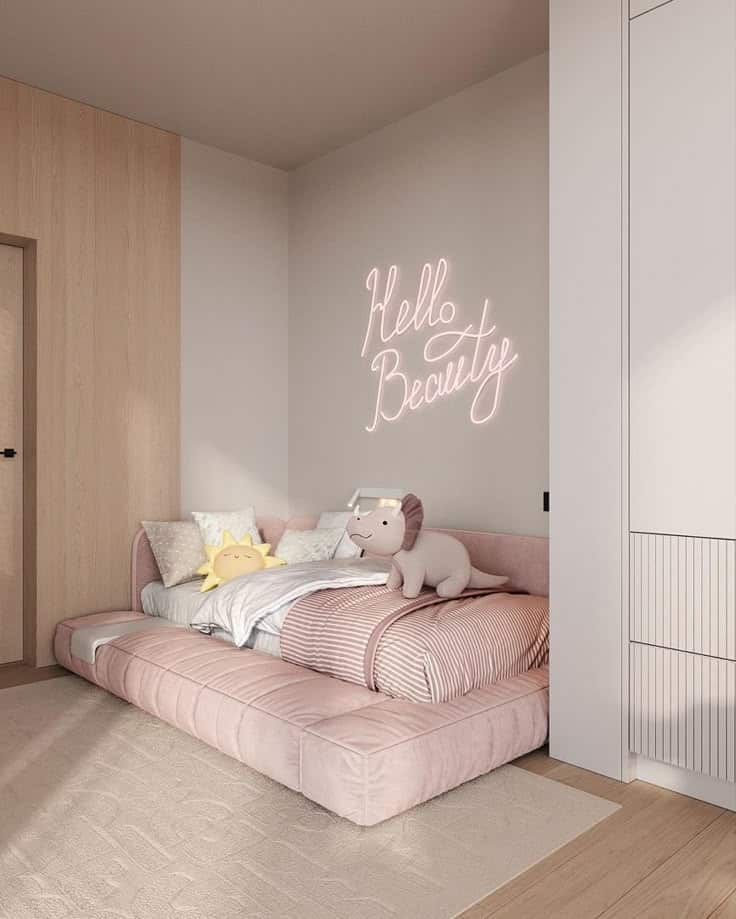
Designing a girls’ kids room means creating a space that is both fun and functional. It should reflect her personality while offering comfort and practicality. A well-designed room balances style with storage and safety to support her growth and daily activities.
Colors, themes, and decorations are important to make the space feel unique. At the same time, clever storage solutions help keep the room tidy. Choosing the right furniture and accessories can encourage creativity, learning, and play.
Key Takeways
- A girl’s room should combine style, comfort, and safety.
- Storage and organization are key to maintaining a neat space.
- The design should grow with the child and inspire creativity.
Essential Elements of Girls Kids Room Design
A well-designed girl’s room balances comfort, functionality, and style. Key factors include color choices that reflect personality, a smart layout to maximize space, and furniture that fits her age and needs.
Choosing the Right Color Palette
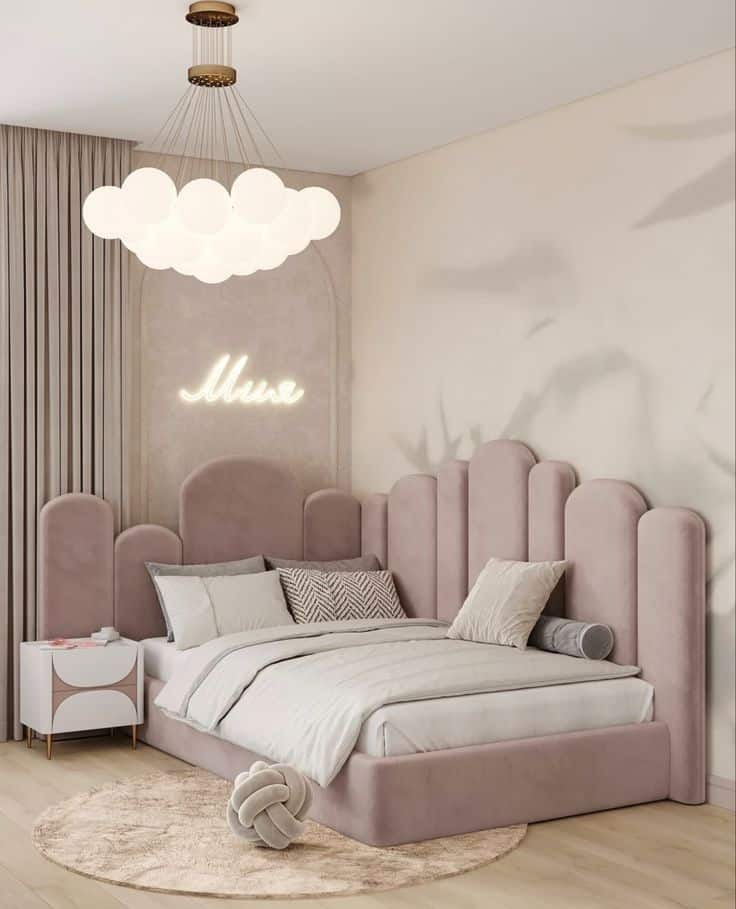
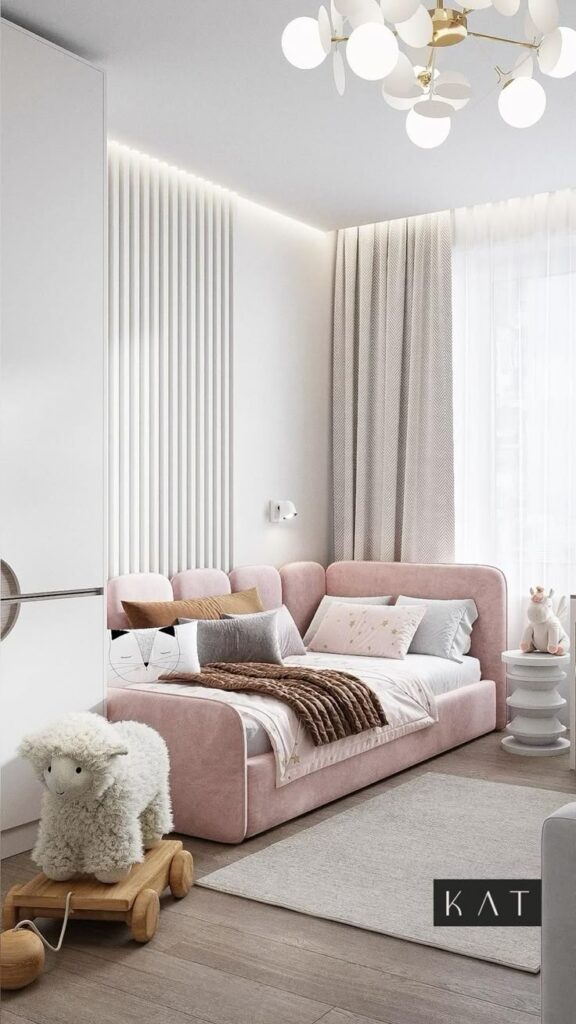
Color sets the mood in a girl’s room. Soft pastels like pink, lavender, or mint can create a calming atmosphere. Bright colors like yellow or coral add energy and cheerfulness.
Combining two or three colors helps keep the space lively without overwhelming it. Walls can be painted in a solid hue, while accents like curtains or cushions add pops of color.
Neutral tones such as white or beige work well as a base. They allow for easy updates as the child grows without needing major changes. Using washable paints is practical for durability and cleaning.
Optimizing Room Layout
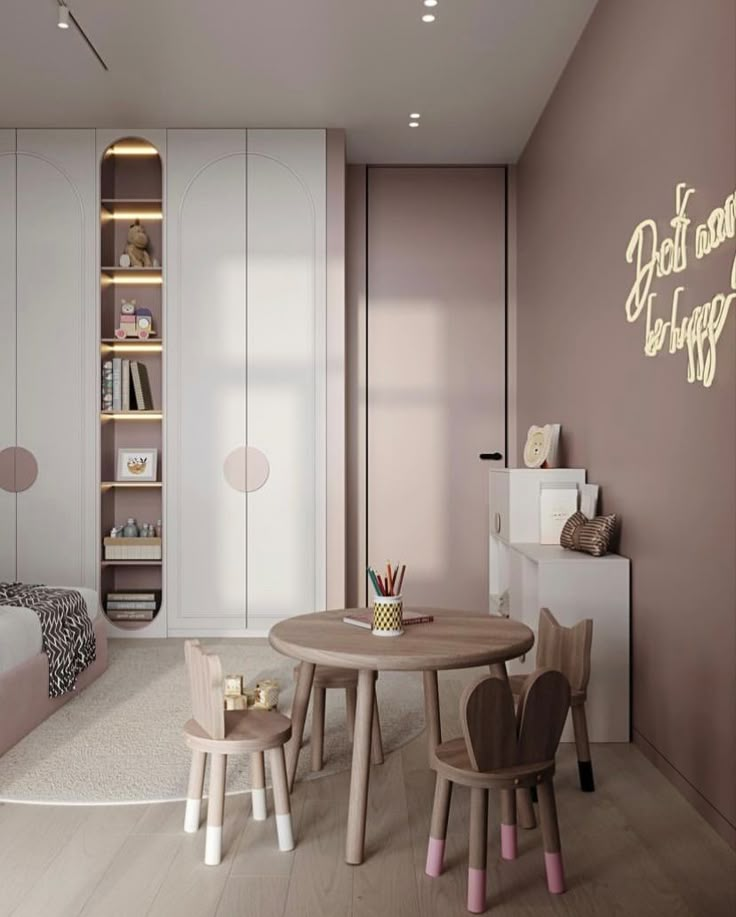
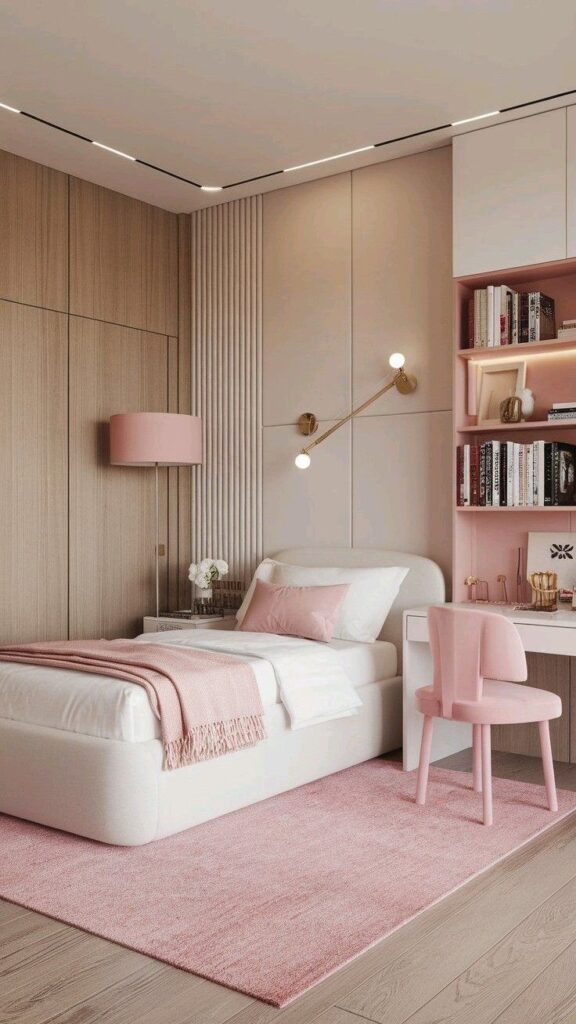
Space planning is essential in a kids’ room. Position the bed away from windows to avoid drafts. Keep toy storage and shelves within easy reach to encourage tidiness.
Creating zones for different activities helps. For example, a reading nook with a small chair, a play area with a rug, and a study desk create balance. Make sure there is enough open floor space for play.
Lighting should be varied. Use natural light during the day and add task lighting over a desk. Soft nightlights help the child feel safe after dark. Clear pathways reduce the risk of accidents.
Age-Appropriate Furniture Selection
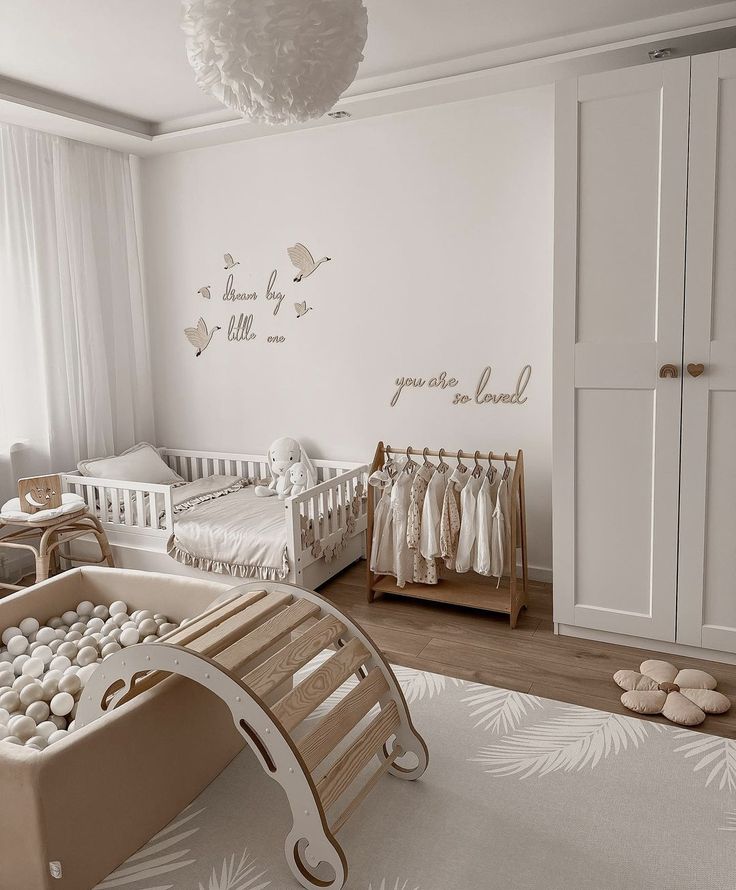
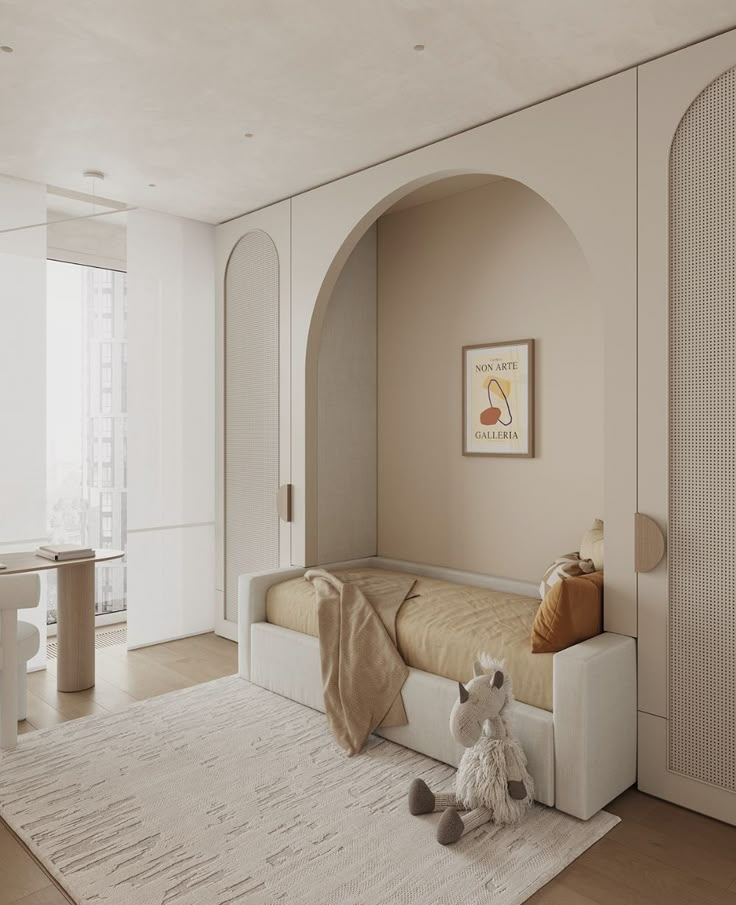
Furniture needs to match the child’s age and growth. A low bed or crib works for toddlers, while older girls benefit from standard beds with storage underneath.
Choose pieces that are sturdy and safe. Rounded edges and non-toxic finishes reduce injury risk. Adjustable desks and chairs support comfort as she grows.
Storage is crucial. Bins, shelves, and drawers help keep toys and clothes organized. Modular furniture that can change with the child offers good long-term value. Avoid heavy or fragile items that pose safety hazards.
Theme and Style Inspiration
Designing a girl’s room involves choosing a clear theme and style. It is important to match colors, furniture, and decorations to create a space that feels both personal and comfortable. Incorporating her interests makes the room more meaningful.
Popular Themes for Girls Bedrooms
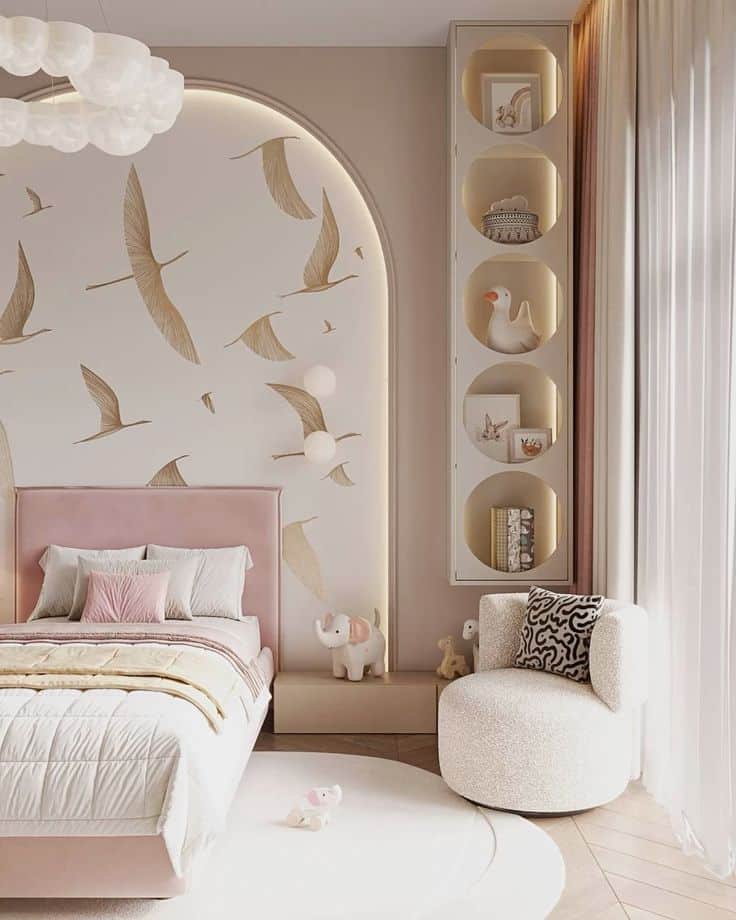
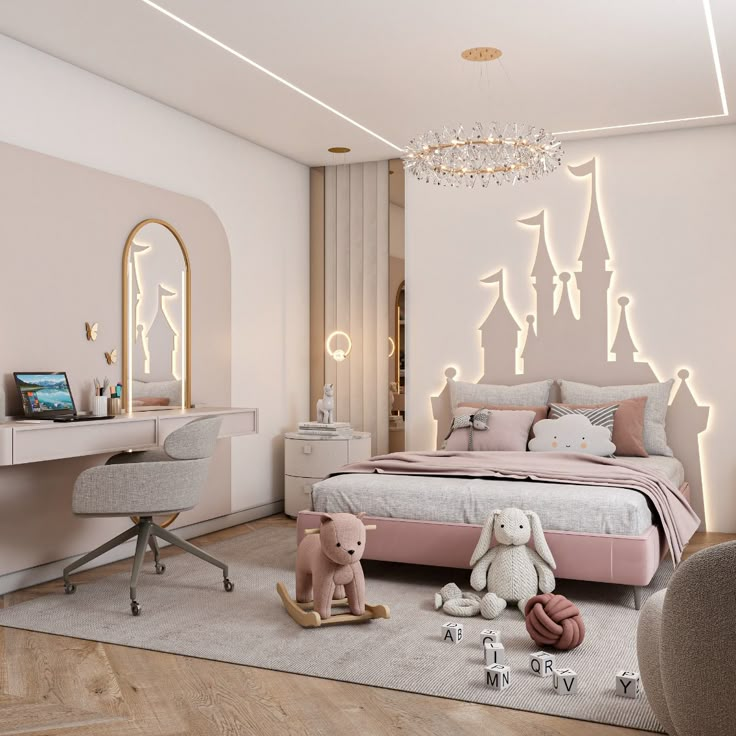
Many girls enjoy themes that reflect nature, fantasy, or favorite colors. Common ideas include floral, unicorn, and fairy tale themes. These often use soft pastels, like pink and lavender, and feature cute, playful decorations.
Some also like space or underwater themes with stars, planets, or sea creatures on walls and bedding. Themes with animals, such as butterflies or kittens, are popular too. Furniture and accessories usually match the theme colors and motifs to keep the room consistent.
Incorporating Hobbies and Interests
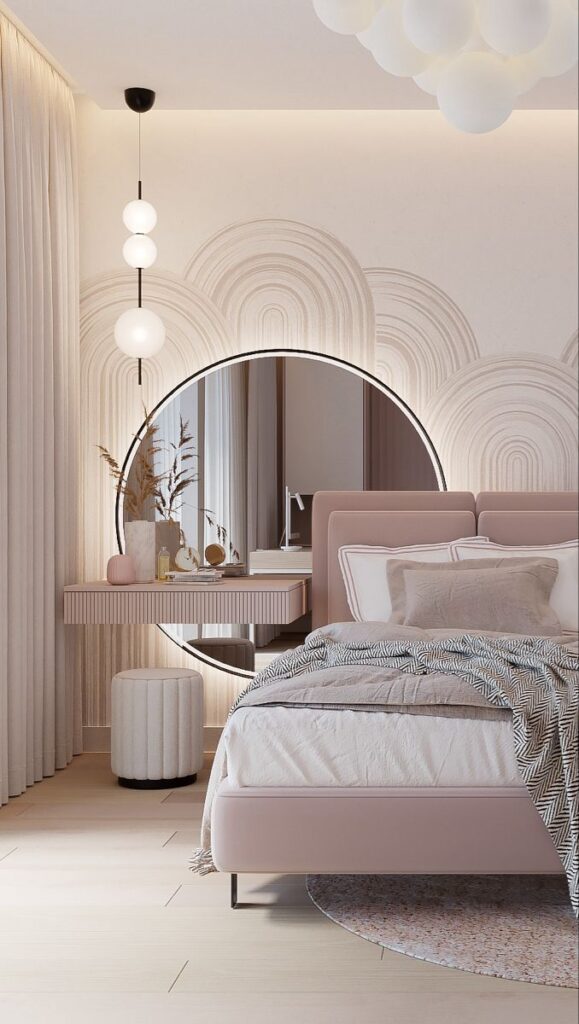
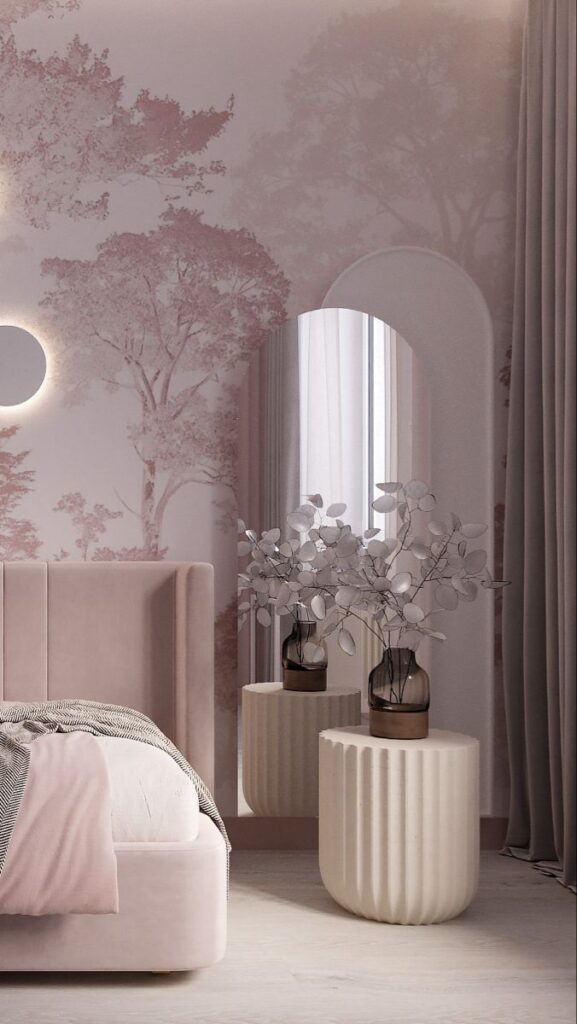
Including hobbies in a girl’s room design helps her feel at home. For example, if she likes art, adding an easel or art supplies storage is helpful. Sports fans may want display space for trophies or team posters.
Music lovers might have instruments or headphones within easy reach. Books and reading corners suit girls who enjoy stories. Designing a space around her interests supports creativity and relaxation.
Mixing Modern and Classic Styles
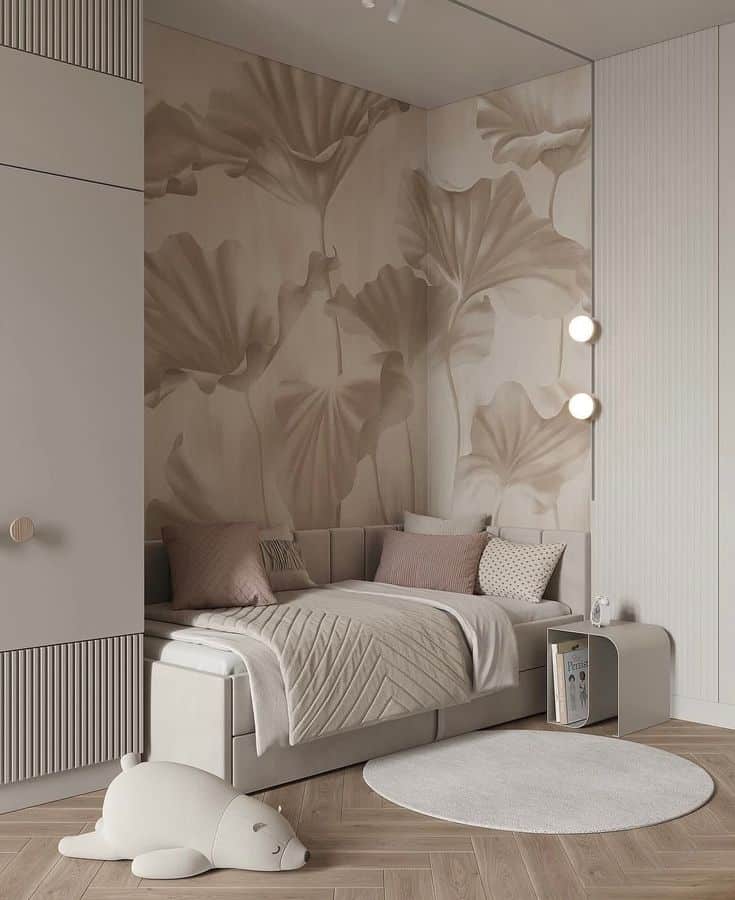
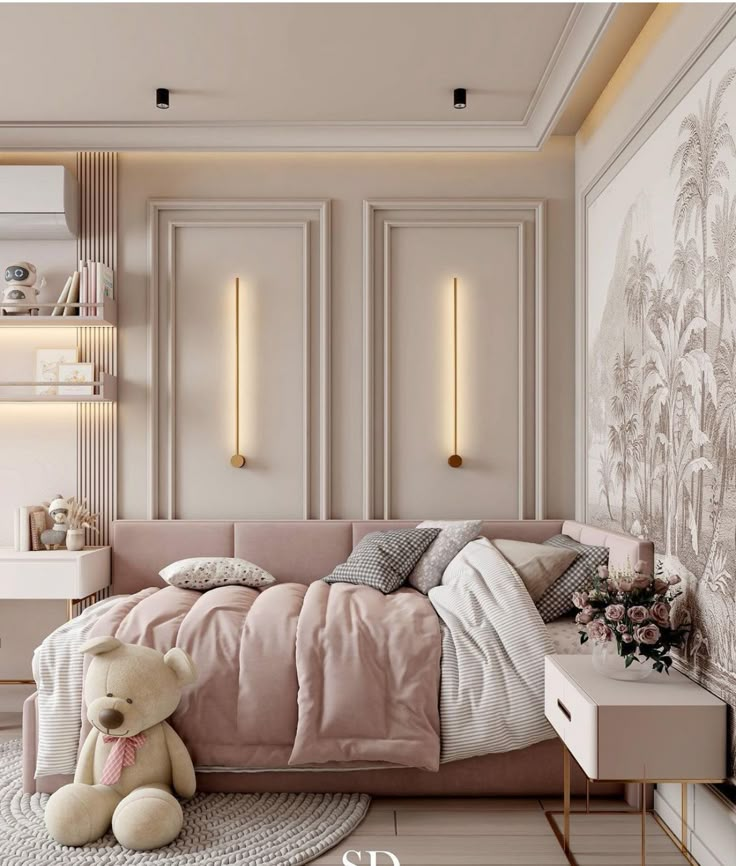
Combining modern and classic styles can make a room flexible and timeless. Modern pieces like sleek desks or storage units blend well with classic items such as wooden beds or vintage lamps.
Neutral colors often balance different styles. For example, a white bookshelf with a colorful, modern chair mixes both looks. This approach keeps the room stylish without feeling outdated or overly trendy.
Creative Storage Solutions
Storage in a girl’s room should be practical and easy to use. It helps keep the room tidy while making sure toys, clothes, and books are easy to find. The following ideas focus on using space efficiently and keeping things organized.
Maximizing Closet Space
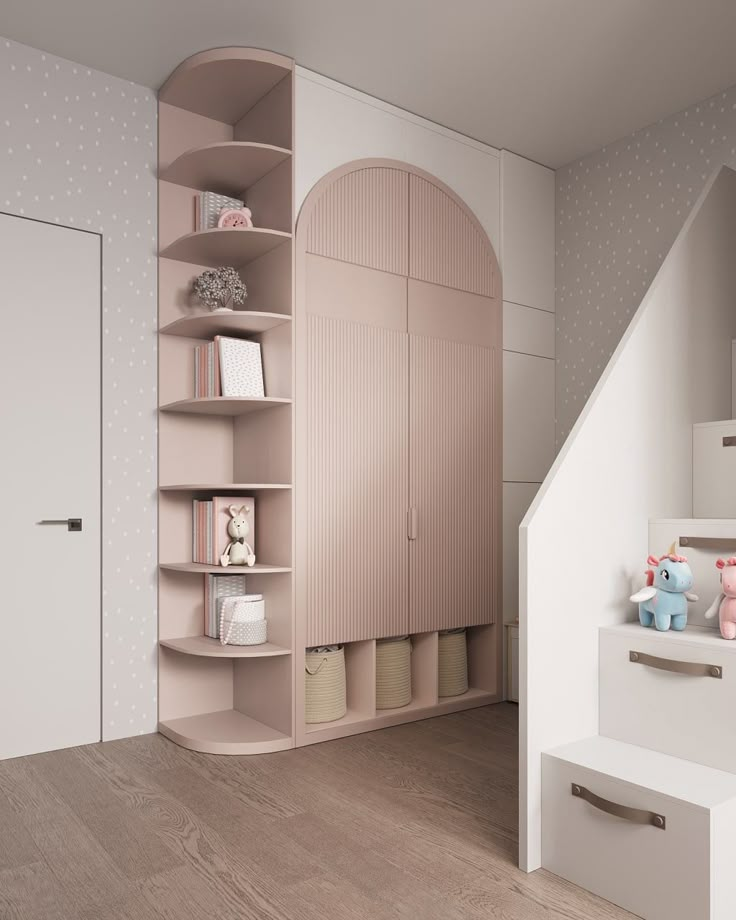
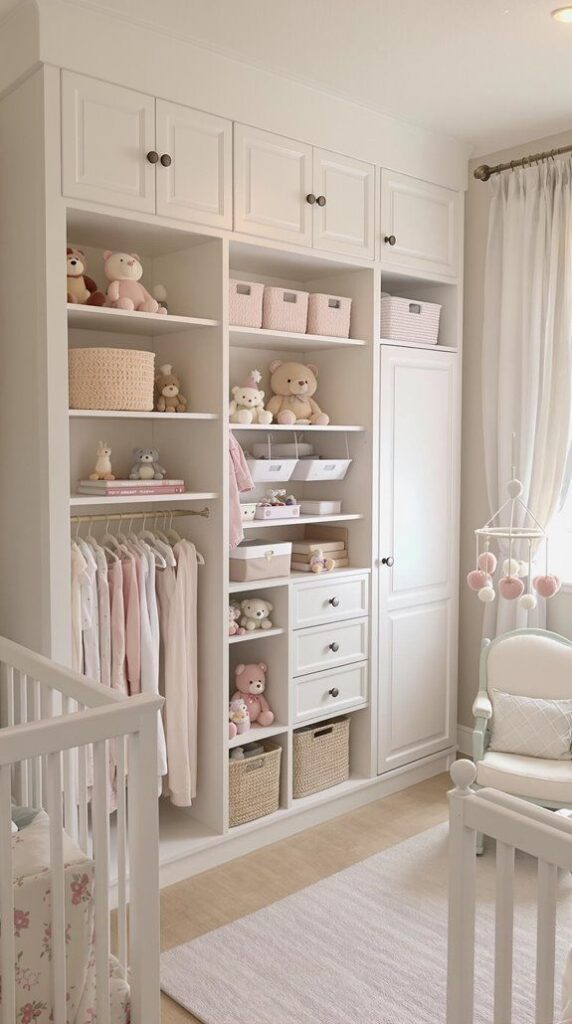
Closets often have extra vertical space that can be used better. Adding double rods allows for two levels of hanging clothes, which doubles the storage area. Shelves or hanging organizers can hold shoes, bags, or folded clothes.
Using clear bins with labels keeps smaller items like socks or accessories visible and accessible. Hooks on the door or inside walls add spots for hats or jewelry. Bright baskets or fabric bins also add color while storing extra items.
Under-Bed Storage Ideas
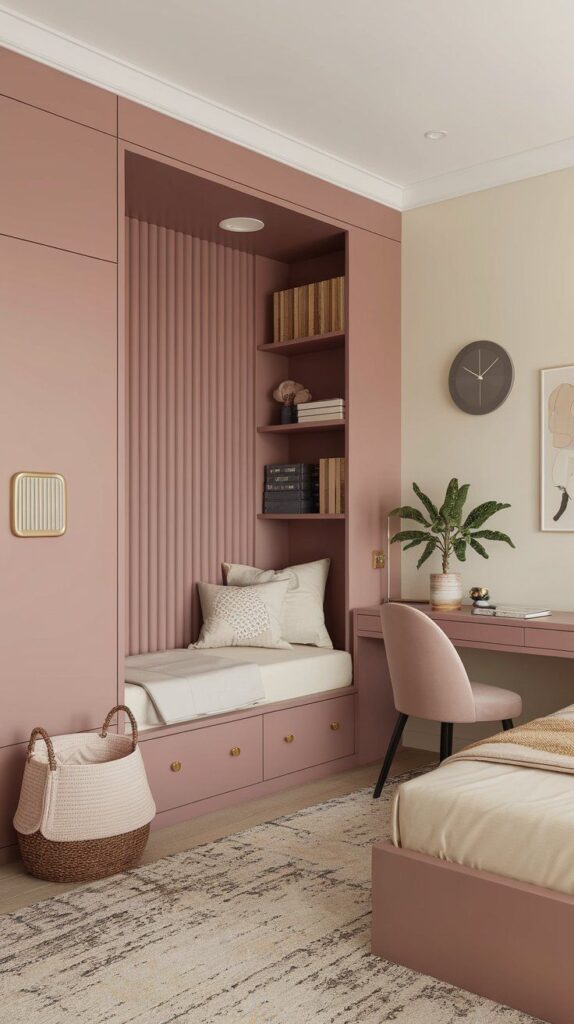
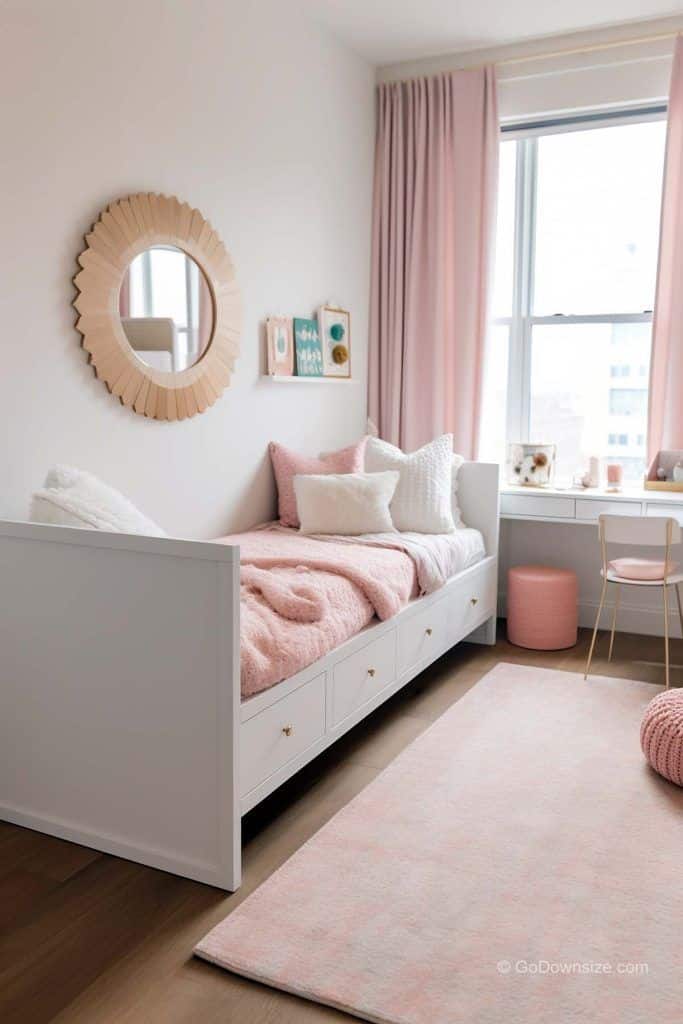
Under the bed is a perfect spot for storage that doesn’t take up extra room. Rolling bins or drawers fit under the bed and hold seasonal clothes or toys. Plastic boxes with lids keep items dust-free while making it easy to pull out what’s needed.
Bed risers can raise the bed, increasing the space below. This allows for larger containers or even a small storage trunk. Keeping under-bed storage neat helps avoid clutter spreading around the room.
Organizers for Toys and Books
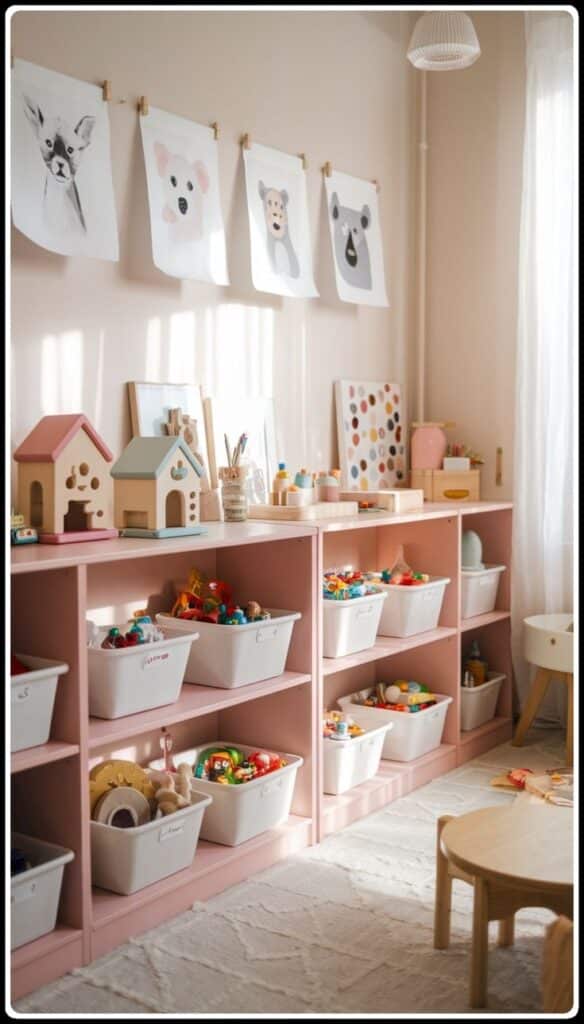

Toys and books need clear places to avoid mess. Low shelves let kids reach their books and toys easily. Divided bins or stackable boxes can sort toys by type or size.
Wall-mounted shelves save floor space and display favorite books. Using baskets or fabric cubes inside shelves can hide toys while still keeping them handy. Labels or pictures on storage containers help children put things back in the right place.
Personalized Decor and Accessories
Personalized decor adds character and comfort to a girl’s room. Items can reflect her interests, style, and personality. Choosing the right wall art, lighting, and bedding can make the space feel unique and inviting.
Custom Wall Art
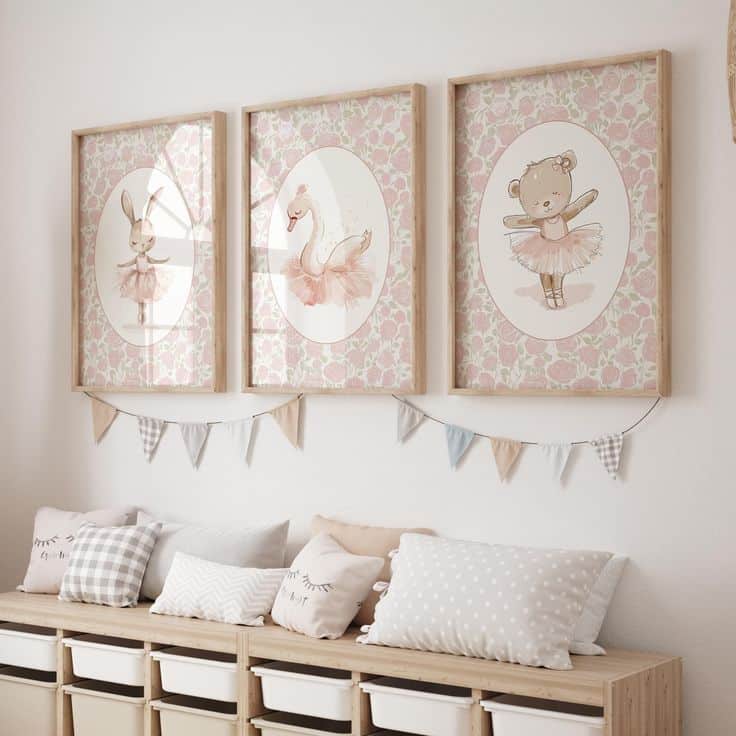
Custom wall art lets a girl express what she likes directly on her walls. This can include framed prints with her name, favorite quotes, or images of animals and characters she loves.
Vinyl wall decals are a popular choice because they are easy to apply and remove. Another option is canvas prints, which add texture and color.
Choosing art with bright or soft colors depends on the overall room theme. Art featuring her favorite themes, such as nature or space, helps create a personal touch.
Decorative Lighting Options
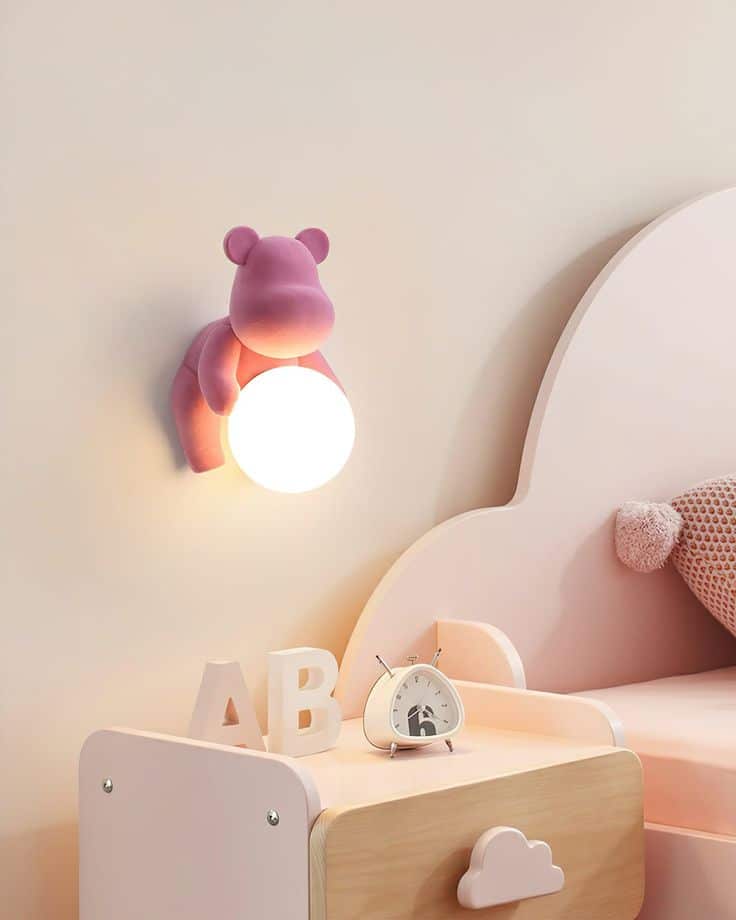
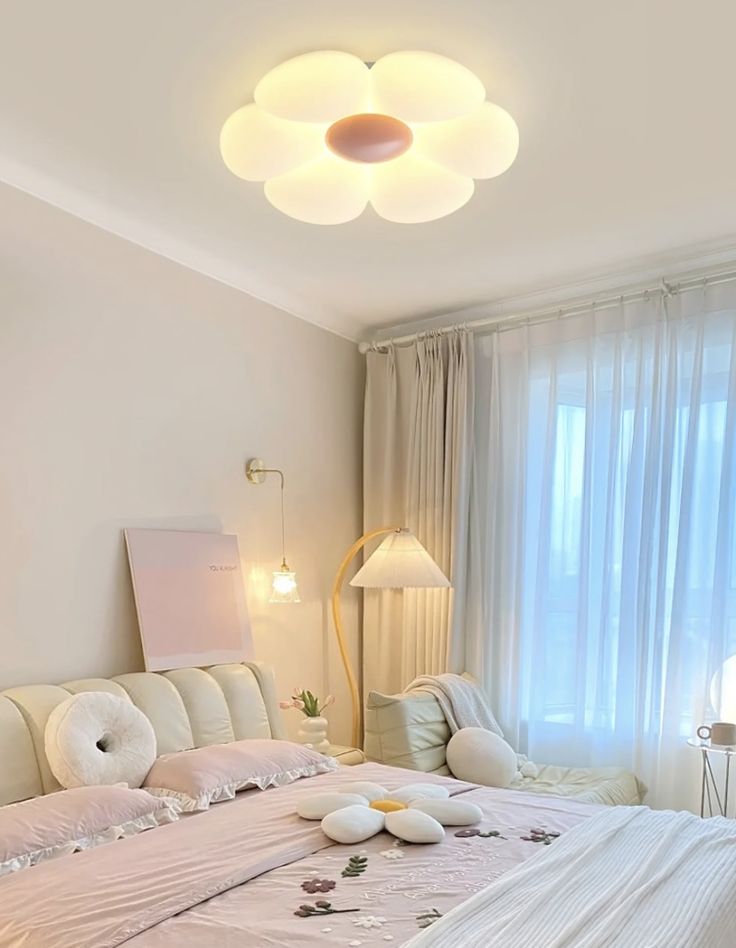
Lighting can change the room’s mood and style. String lights with soft white bulbs add a gentle glow, helping create a cozy atmosphere.
Desk lamps or night lights in fun shapes like stars or animals combine function with decoration. Color-changing LED lights allow for customization in color and brightness.
Placement is key. Lights can be hung around windows, beds, or shelves to highlight favorite spots or make the room feel larger at night.
Unique Bedding and Textiles
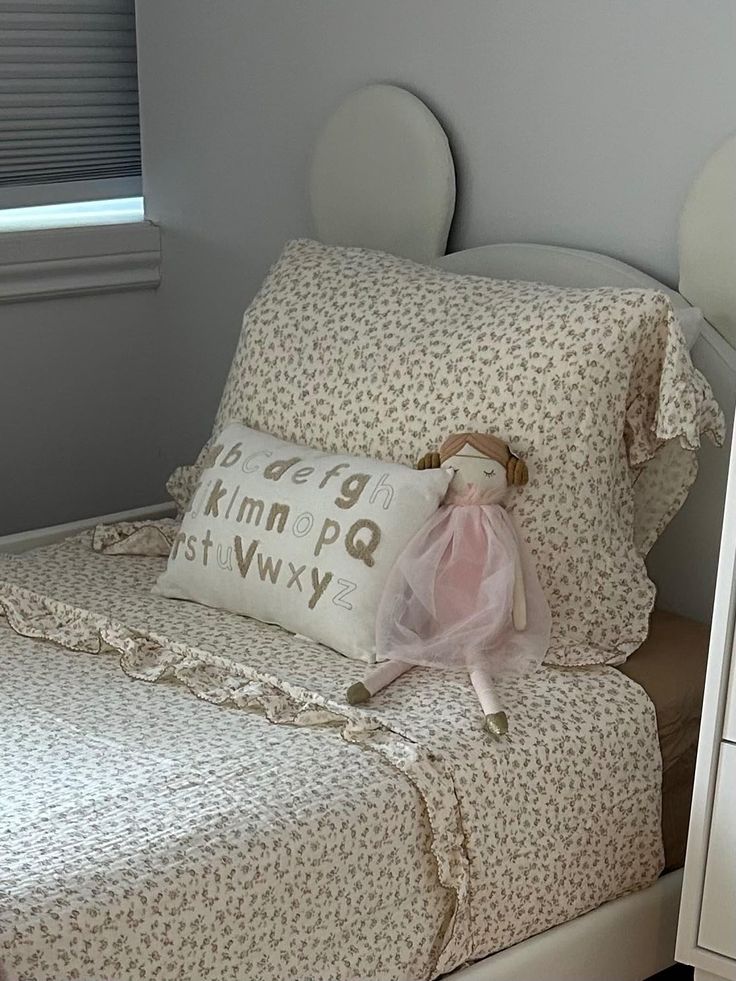
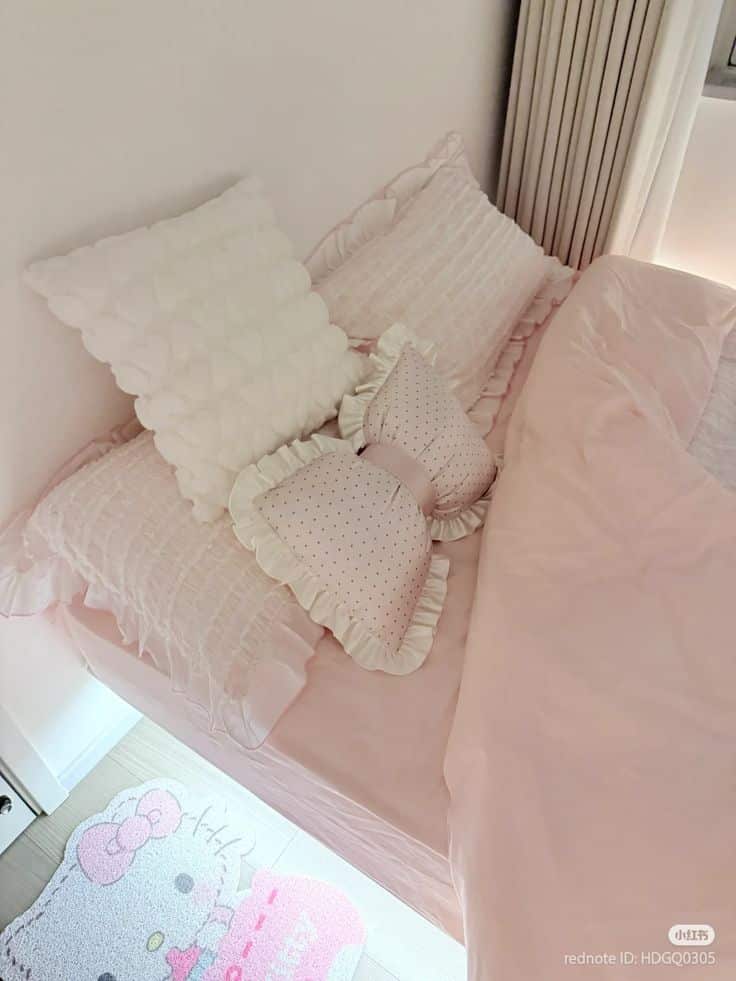
Bedding is both practical and decorative in a kid’s room. Customized blankets or pillowcases with names or favorite patterns create a special feeling.
Textiles with different textures, like soft fleece or smooth cotton, add comfort. Coordinating sheets, pillows, and curtains in matching themes tie the room together.
Choosing washable and durable fabrics is important since kids need easy-to-clean options. Fun prints like animals, stars, or flowers keep the design lively and age-appropriate.
Safety Considerations
Designing a girl’s room requires careful decisions about materials and the arrangement of furniture. These choices help create a space that is safe and reduces the risk of accidents.
Child-Safe Materials
Materials should be non-toxic and free from harmful chemicals like lead or formaldehyde. Paints and finishes must be labeled as safe for children. Fabrics, such as curtains and bedding, should be washable and flame-resistant.
Carpet and rugs need to have a non-slip backing to prevent falls. Avoid small decorations or toys with detachable parts that can be choking hazards. It is best to select rounded edges for wooden or plastic items to avoid cuts or bruises.

Furniture Placement for Safety
Place heavy furniture, like dressers, against the wall and secure them with anchors to prevent tipping. Keep beds away from windows to reduce the risk of falls or broken glass injuries.
Clear pathways should exist between furniture to avoid tripping. Avoid placing items that can be climbed near windows or shelves to stop accidental falls. Low storage units and furniture with smooth edges lower the chance of injury during play.
Encouraging Learning and Creativity
A well-designed kids’ room can support both focused study and imaginative play. Creating distinct spaces helps children switch between learning and creativity. Thoughtful furniture and layout make these activities inviting and practical.
Study Corners and Desks
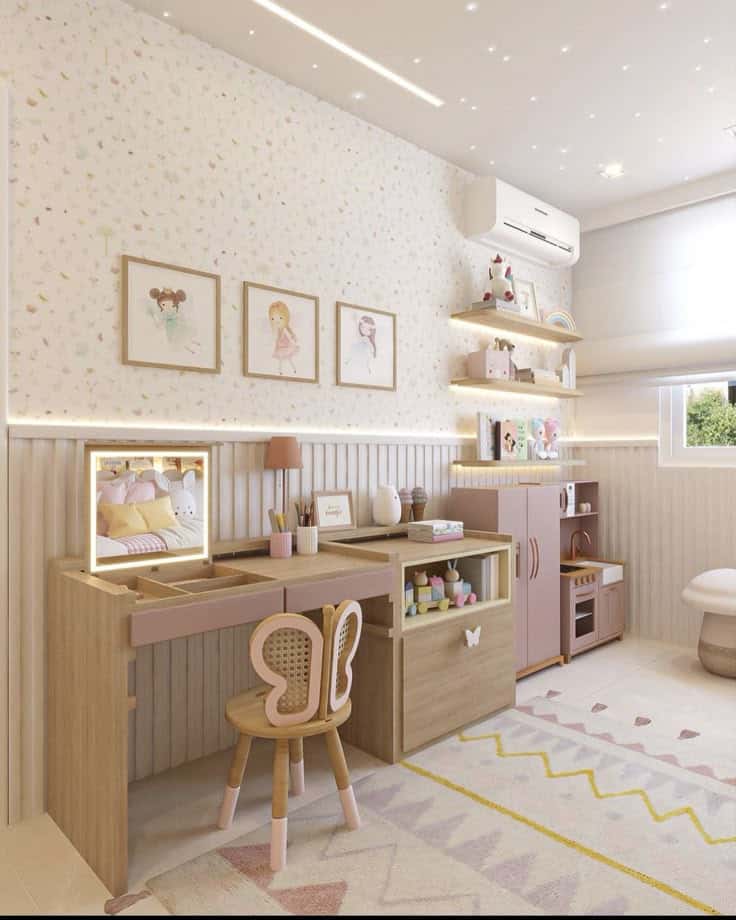

A dedicated study corner helps a child focus on homework and reading without distractions. The desk should be the right height and size for the child, with enough surface area for books, notebooks, and a lamp.
Good lighting is key. Natural light is best, but a bright desk lamp also works. Adding shelves or organizers nearby helps keep pens, paper, and supplies tidy. A comfortable chair supports good posture.
Personal touches, like a colorful bulletin board or inspirational quotes, can make the space welcoming. The area should be quiet and free from playful distractions to encourage concentration.
Interactive Play Areas
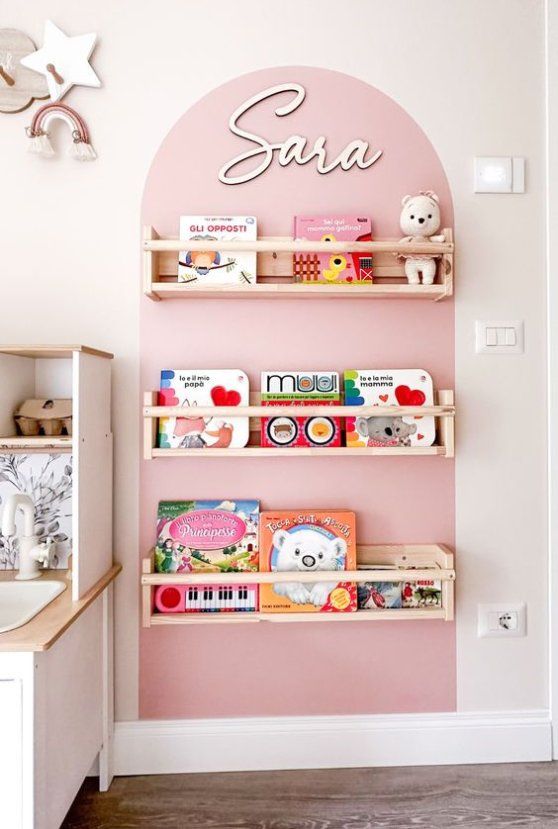

Interactive areas should invite creativity through hands-on activities. Tables or mats designed for crafts, puzzles, or building blocks make it easy for children to explore ideas.
Storage solutions near play zones keep art supplies, toys, and games organized. Using bins or shelves labeled with pictures helps kids find and return items independently.
Incorporating writable surfaces like chalkboards or whiteboards encourages drawing and problem-solving. These spaces foster imagination while developing fine motor and cognitive skills in a fun, practical way.
Space-Saving Ideas for Small Rooms
Small rooms need smart solutions to keep them organized and functional. Using furniture that serves more than one purpose and taking advantage of all wall space can help make the most of limited square footage.
Multi-Functional Furniture
Furniture that has more than one use helps save space and reduce clutter. For example, beds with built-in drawers provide storage for clothes or toys. A desk that folds into the wall can create a play or study area without taking up floor space all day.
Storage ottomans are another good option. They serve as seats, tables, and hiding spots for books or blankets. Choosing pieces that fit the room size and offer hidden storage helps keep the space neat and open.
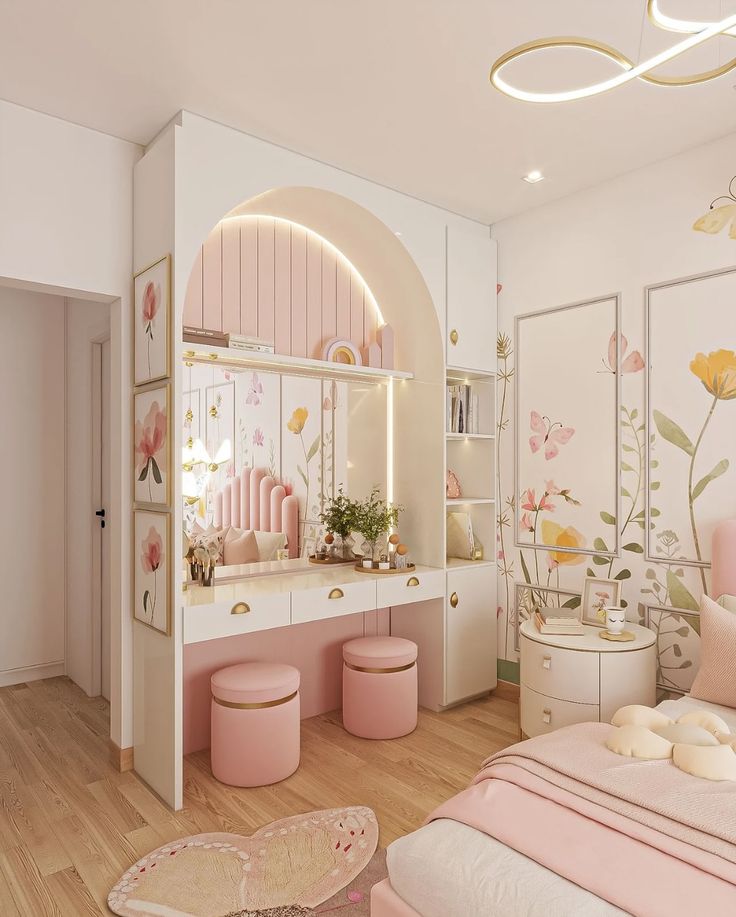
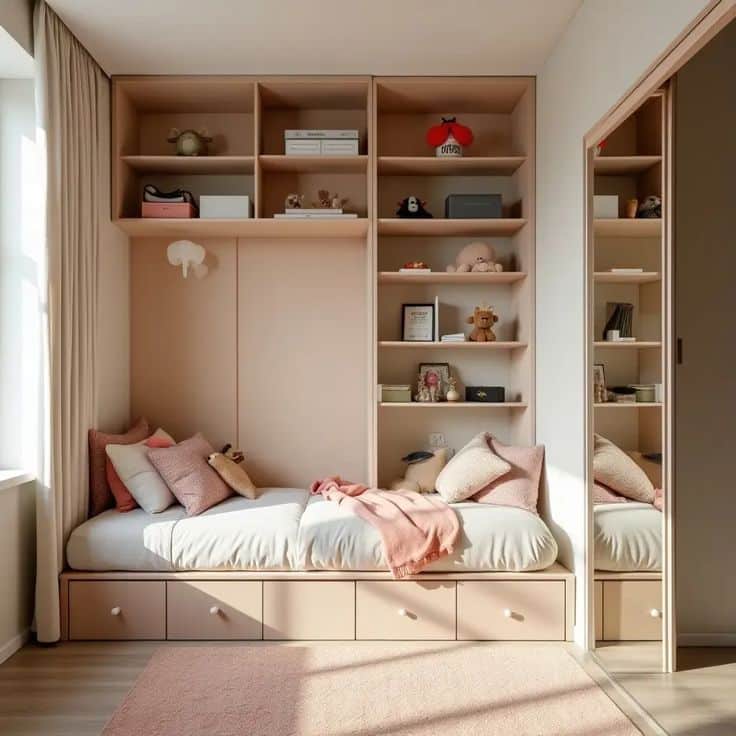
Creative Use of Vertical Space
Walls can hold shelves, hooks, and organizers to free up the floor. Installing wall-mounted shelves allows books, games, and art supplies to be stored off the ground. Hooks and pegboards keep bags, hats, and clothes easy to reach without using drawer space.
Loft beds are a strong vertical solution. They lift the bed off the floor, creating room underneath for a desk, toy area, or extra storage. Vertical storage makes the most of small rooms by keeping the floor clear and the room feeling larger.
Adapting the Room as Girls Grow
A girl’s room should change to fit her needs and interests as she gets older. This means adjusting furniture, storage, and decorations to work for different ages and activities. Flexibility in design helps the room stay useful from toddler years through pre-teen stage.
Transitioning from Toddler to Pre-Teen
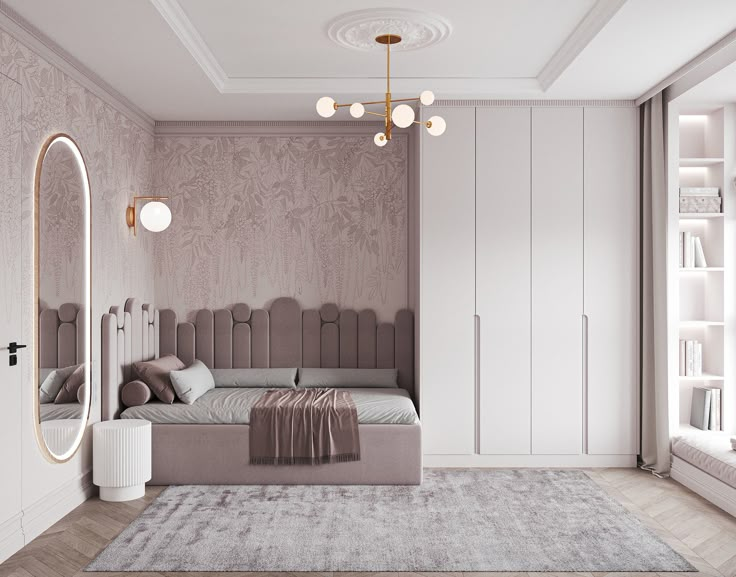
As girls grow out of toddler beds, it’s important to add a full-size bed that fits the room well. Storage should shift from toys to school supplies and clothes. She may want a desk or a reading nook.
Colors and decorations can become less babyish. Choose themes and wall art that are simple and easy to update, like neutral tones or patterns she can personalize with posters or bedding.
Safety items used for toddlers, like corner protectors, can be removed. Electrical outlets may need covers until she is older. The room must support homework, hobbies, and sleep.
Flexible Design Features

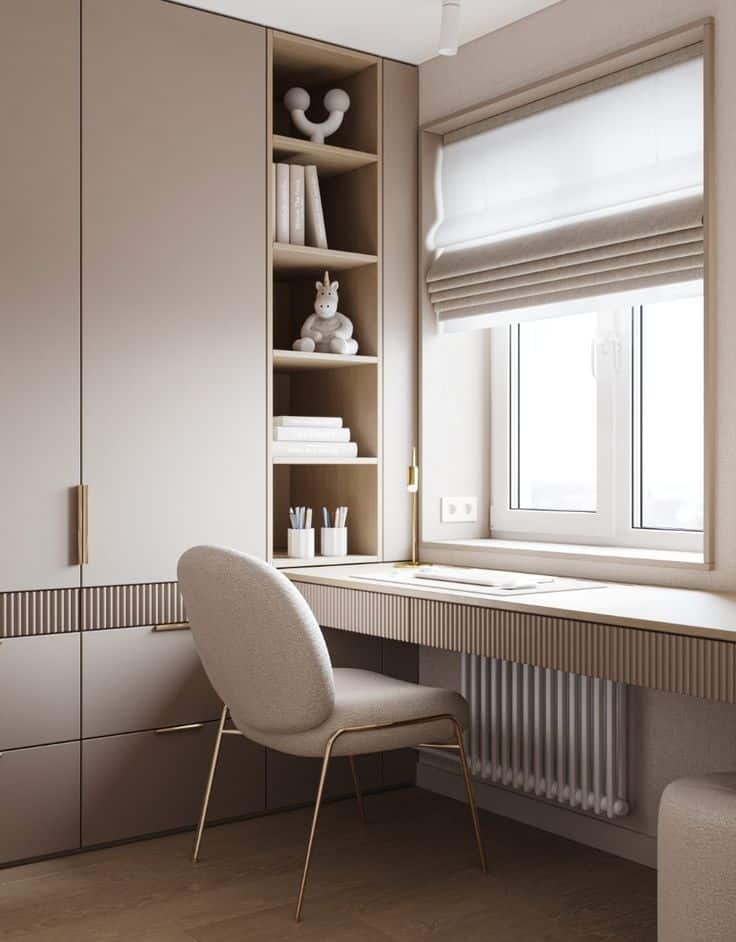
Using modular furniture, like beds with storage drawers or desks with shelves, helps the room stay organized. Lightweight pieces make it easy to rearrange as needs change.
Wall shelves or pegboards provide adaptable storage for books, toys, or craft supplies. A corkboard or dry erase board can give a place to display schedules, notes, or artwork.
Lighting should offer both brightness for reading and soft light for relaxing. Adjustable lamps or dimmers add versatility.
Example of flexible items:
| Feature | Purpose | Benefit |
|---|---|---|
| Loft bed | Saves floor space | Creates room for desk |
| Storage bins | Organize toys and supplies | Easy to move and clean |
| Changeable decor | Posters, bedding, wall stickers | Updates room style simply |
Sustainable and Eco-Friendly Options
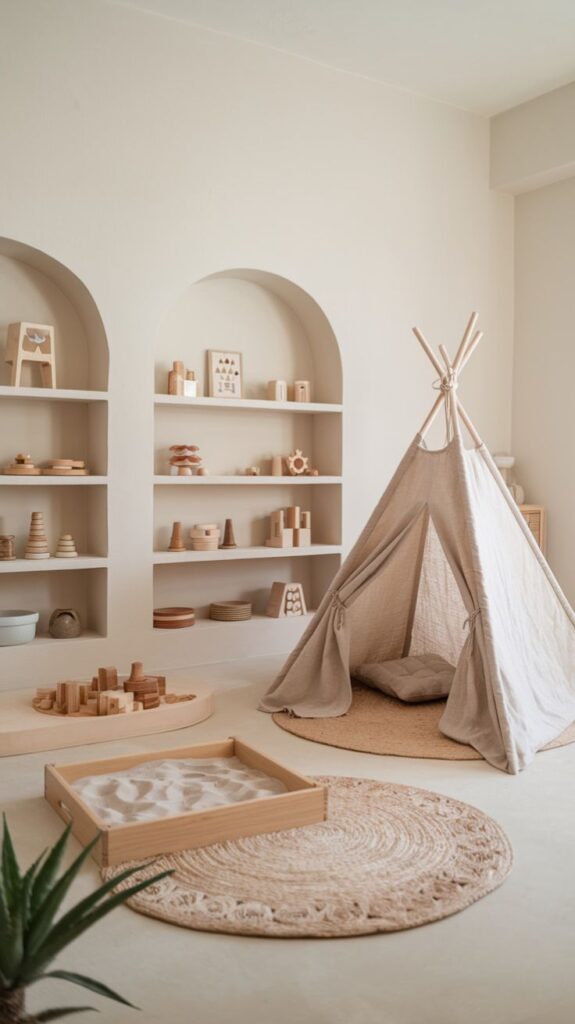

Choosing sustainable materials helps reduce environmental impact. Natural fibers like cotton, wool, and bamboo are good choices for rugs and bedding. These materials are biodegradable and often grown without harmful chemicals.
Furniture made from reclaimed wood or bamboo is both sturdy and eco-friendly. Reclaimed wood uses existing materials, lowering the need for new trees. Bamboo grows quickly and needs less water than traditional wood.
Paints and finishes should be low in volatile organic compounds (VOCs). VOC-free paints improve indoor air quality and are safer for children’s health. Choose light, natural colors for a calm, eco-friendly room.
Energy-efficient lighting is another important choice. LED bulbs use less power and last longer than regular bulbs. Installing dimmer switches can save additional energy.
Parents can also consider secondhand furniture and decor. These items often cost less and reduce waste. Upcycling old pieces with new paint or fabric adds a unique touch and extends the life of materials.
| Eco-Friendly Item | Benefit | Example Use |
|---|---|---|
| Reclaimed Wood Furniture | Saves trees, durable | Bed frames, shelves |
| Organic Cotton Bedding | Chemical-free, soft | Sheets, pillowcases |
| Low-VOC Paints | Safer air quality | Walls, furniture |
| LED Lighting | Energy saving, long-lasting | Ceiling lights, lamps |
Budget-Friendly Decorating Tips
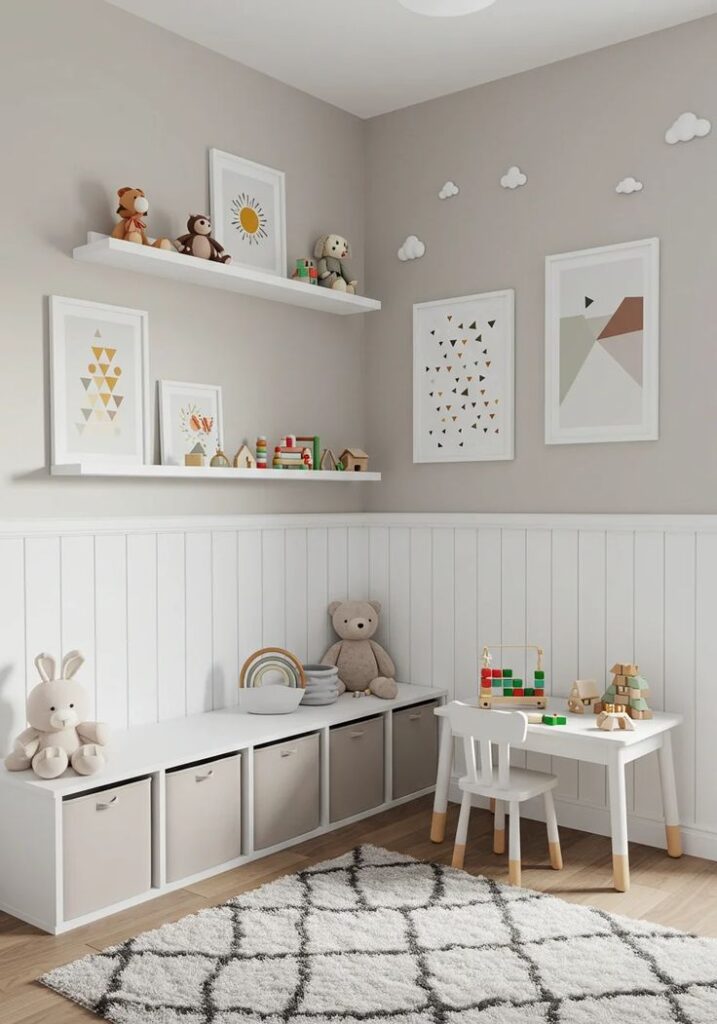
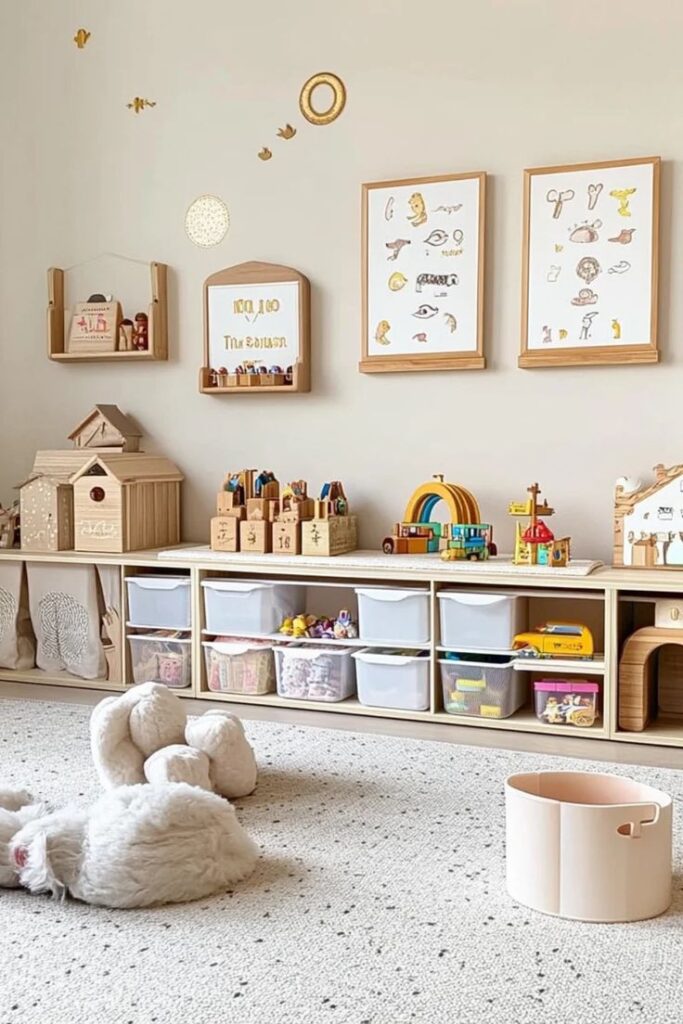
Choosing simple, affordable materials helps create a nice girls’ room without spending too much. Paint is an easy way to change the room’s look. Using soft pastel colors or bright accents makes the space feel fresh and inviting.
Using multi-use furniture saves money and space. A bed with storage underneath or shelves that hold toys and books are smart choices. These pieces keep the room tidy and functional.
Decorations like posters, wall decals, or string lights add personality on a budget. These items are usually low cost and easy to change as tastes evolve.
Buying secondhand or upcycling old furniture can cut costs. Sanding and painting old dressers or chairs gives them new life. It also adds a unique touch to the room.
Here is a quick list of ideas for budget-friendly decorating:
- Use washable paint for easy updates
- Add colorful throw pillows and curtains
- Make DIY wall art or crafts
- Shop thrift stores for unique finds
- Organize toys with baskets or bins
By mixing these tactics, a girl’s room can be stylish and practical without high expenses.
- 1.0Kshares
- Facebook0
- Pinterest1.0K
- Twitter0

